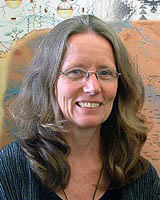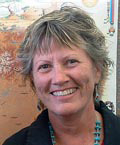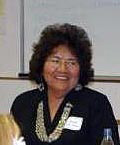Introduction
The region known as 'Arizona and New Mexico Indian Country' is a very rural area covering parts of four western US states. It encompasses portions of the Navajo Nation, where 180 000 people live in a 27 000 square mile area (Fig 1). It is home to the largest federally recognized American Indian tribe1. This area is a unique enclave, with particular cultural, healthcare delivery, and socioeconomic circumstances. The majority of residents are American Indian and speak a language other than English in their homes1,2. The health services for the population are mostly provided by the Indian Health Service (IHS), a federal healthcare delivery system of the US Public Health Service. As in other rural areas, there is difficulty maintaining an adequate and stable health professions workforce. The health workforce comes mostly from outside the community on short-term assignment, and the majority of health professionals do not share the cultural background of the community.
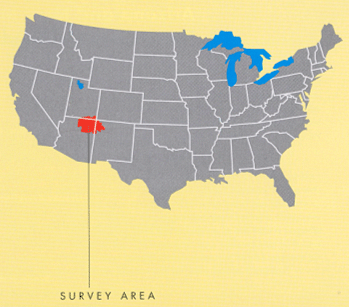
Figure 1: The US region known as 'Arizona and New Mexico Indian Country'.
The composition and stability of the health workforce is a timely and primary health issue for this area, as residents move toward community management and control. Historically, Navajo people have been served by IHS western medicine professionals who are predominantly outsiders. The contributions of IHS to the health of this population are well documented, especially with regard to communicable disease3. The complex socio-behavioral health challenges that include large disparities in chronic illness prevention and care and behavioral health facing the community today will be best addressed by community members with cultural knowledge and legitimacy. Insiders likely to establish for the long term in the community can provide a workforce that speaks the Navajo language and is capable of bridging and integrating traditional cultural and western views in communication and care of patients within the community. On the threshold of assuming control of their health services from the federal government, Navajoland needs native leaders in health care to give voice to cultural and community values in the formative process.
Although professionals outside the community have predominated through IHS, jobs for local residents in ancillary and technical positions have been provided. Residents play an extremely important role in healthcare delivery as aides, technicians, and practical nurses and have provided a cultural interface for the system. This group of residents is a unique resource for the Navajoland community as they already possess grounded knowledge of both community and healthcare system workings. This particular study evaluated the circumstances of those individuals already working within the health system in any capacity to discover the stories, interests, and needs related to their health career goals and advancement. The aim was to identify what would be helpful to support educational and career progress, and to determine the barriers to advancement.
Methods
Community action research methodology was used to understand the challenges that residents of Arizona and New Mexico Indian Country experience when pursuing career advancement. A two-part survey research design, which included a written questionnaire and interviews, was used. The qualitative interview portion of the study is reported here.
The study was evaluated, modified, and approved by the Navajo Health Research Review Board (NHRRB), Navajo and Albuquerque Area Indian Health Service Institutional Review Board, and the University of New Mexico Institutional Review Board. Community stakeholders are included by NHRRB in the consideration, approval, and dissemination of research done on the Navajo nation. The study was presented to and had to be recommended by four health facility councils and five local chapter houses prior to being considered by the board for approval. NHRRB modified survey items prior to giving approval.
Local dissemination of results to pertinent tribal committees is mandated and facilitated by the NHRRB. At the direction of the NHRRB, study results were presented to the President of the Navajo Nation, as well as three other tribal education and health services committees. The NHRRB is an active agent facilitating community engagement in and service to the community through application of research. This community engagement model4 is very compatible with and facilitates the community action research methodology by providing forums for validation.
Sample selection
Interviewees were chosen from the 245 health workers in Arizona and New Mexico Indian Country who returned questionnaires on career interests and needs distributed at their workplaces by the research team (see Fig 2 for workplace locations). A question on the written questionnaire asked participants if they could be contacted for an interview. A 10% purposive proportional sample of questionnaire respondents was selected to reflect the current occupation, worksite, age and cultural identify of those who returned the survey. Seventy-seven percent of questionnaire respondents were American Indian, 80% were over 31 years old and 62% worked in very rural settings. Approximately one-third of respondents were nurses, one-third were community health or community health education workers, and one-third were clinical technical support personnel at the time of the survey. If they consented and were selected, interviewees were contacted by phone or email and invited to interview in person with the investigators. Interviews were scheduled at the convenience of and in the home or work communities of the interviewees.
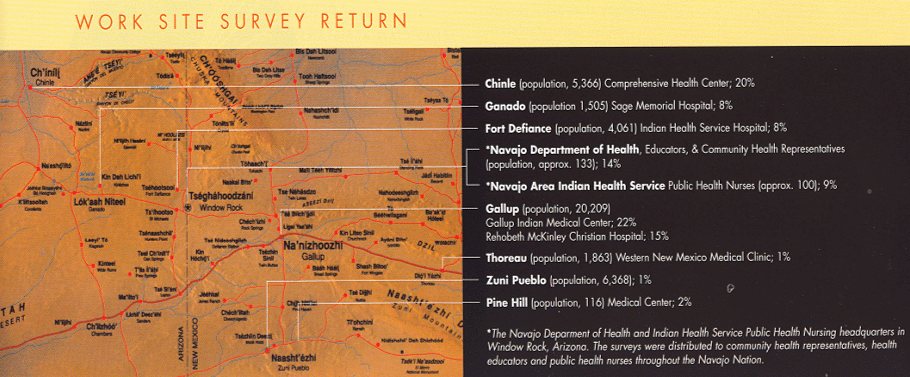
Figure 2: Workplace locations.
Data collection
Interviews were jointly conducted by two investigators (BO and LP). A semi-structured questionnaire that included six open-ended and two closed-ended questions guided the interview sessions (Appendix I). The questions were designed to prompt the interviewee to tell their story of trying to go back to school to advance in their health career. Questions were focused to elicit the interviewees' views of barriers and facilitating factors as they considered or tried to take career advancement and education steps. Other than framing the questions on barriers or obstacles and factors that would help no options from the literature or prior work were introduced to the interviewees in this part of the study. Investigators took notes by hand independently during actual interviews. Review was undertaken of both sets of notes by both interviewers simultaneously in order to obtain agreement on content. One final set of agreed-upon notes was entered into a word processing program within 3 hours of the interview.
Data analysis
QRS Nudist software (QRS Software; Melbourne, VIC, Australia) was used to sort interview responses by question and compile all responses to each question in a successive fashion. Interview data were analyzed using a constant comparative method to identify key themes common within the responses. Themes in the content of what the interviewees said within each question and across questions were identified by extensive and repeated reviews of the text, first individually and then jointly, by two investigators. Review, discussion, and refinement of emerging themes were performed with the third investigator.
Results
Twenty-five personal interviews were conducted between February and April 2003. A total of 37 individuals had originally been invited to participate. Six declined because of time constraints, and six did not attend at the scheduled time. Table 1 shows the occupational and demographic characteristics of those interviewed. The duration of the interviews was between 30 min and 60 min. Two types of findings are reported: (i) those themes that were found to recur within interviewees' stories; and (ii) notable patterns across interviews identified by the outside perspective of the interviewers.
Table 1: Characteristics of interviewees (n = 25)
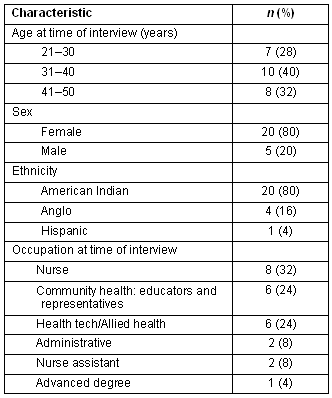
Themes within interviewees' stories
Themes about financial barriers, dealing with the educational system and uncertainty and inflexibility in work situations were key barriers in the interviewees' stories. Making the decision, knowing children would not be disadvantaged, and being sure of the worth of the education were themes in conversations about 'what would have to happen' for them to move forward. These themes are now elaborated.
Financial barriers: The most common theme in the barriers was 'making ends meet'. Financial and time demands form a circular set of circumstances that create a barrier to career progression. Few educational programs are local and the cost and time required to attend are sizeable in the lives of already financially strained workers without enough hours in the day. The majority of those interviewed were the sole financial support for their families. Many were single parents or providers for extended families that included parents or children of siblings.
The need to maintain the income level of full-time work heightened time pressure. The cost of commuting (including fuel and wear and tear on vehicles) added to the financial burden. If programs were very distant or required full-time study, students faced the need to either relocate their families or to obtain a second residence for student use with intermittent commuting.
Adding the cost of housing to the budget was a strain that interviewees who had previously attempted to continue their education had not fully anticipated and seemed to lead to a breaking point. Some said housing and other unanticipated costs led to leaving a program and discontinuing studies. On the reservation, housing costs may be minimized. When living in a family homestead, no rent or mortgage payments may be required.
It became clear as interviews progressed that when a respondent mentioned finances or bills, the concern was about the management of current obligation in the context of taking on a new commitment. Many interviewees mentioned that their own bills included children's educational expenses for private or off-reservation schools that they felt were better than those on the reservation.
Applying for scholarships was viewed as a cumbersome process that was unlikely to result in success. The prevalent view was that the few available scholarships were reserved for the academically exceptional or that selections were politically determined for both the Navajo Nation and IHS scholarships. The real monetary costs of education for these students were not just tuition and fees, but also the costs of travel, housing, and relocation, if necessary, added to current bills and debt.
Dealing with the educational system: A second set of barriers involved dealing with the educational system. Extensive complicated paperwork, requirements for computer-completed applications, receiving misinformation, receiving information too late, and extensive 'red tape' characterized the interviewees' process of getting started on career advancement. One health worker succinctly stated that 'misinformation resulting in cost and delay' was the biggest barrier to career advancement.
Prerequisite to health professions courses and experiences within classes created obstacles. Misinformation resulted in taking unnecessary courses, prerequisite changes for education programs made expectations confusing and sometimes caused needing courses beyond what had been planned. Prerequisites were reported as being available infrequently, scheduled at times difficult to accommodate for a working person and often were full, thus unavailable. Interviewees used words such as 'dreadful', 'difficult', and 'irrelevant' to describe prerequisites.
Difficulty obtaining assistance while taking a course was common. In one example there was one tutor for all math and science courses at the institution who offered one tutoring session per week. The interviewee was unable to get her questions answered, despite traveling more than 2 hours for a tutoring session. This led to dropping a course and discontinuing study. Contacting the faculty was also difficult. One student reported making a long trip to campus, only to find that the faculty member was not in the office.
Uncertainty and inflexibility in work situations: Inability to accommodate school schedule demands was frequently mentioned as an obstacle to advancement. Difficulty getting a clear picture of the consequences and permissibility of reducing work hours as they considered furthering their education was common. Job and employment benefits (including health insurance) retention was unclear. Having a job in the home community following completion of an education program was desired but lack of assurance was named as barrier.
Making the decision: 'Making the decision' was a key theme related to what would have to happen for respondents to advance in their careers. They resolutely stated that once the decision was made, it would happen. Despite the barriers, the process of committing to the personal path to advancement was what would actually make it happen. This sentiment was tied to an underlying premise that keeping in touch with motivating factors would keep them on the path.
Knowing that children would not be disadvantaged: Several themes around reducing uncertainty to help them 'make the decision' emerged for these potential students. Knowing that children would not be disadvantaged by their mother's decision about career advancement was a strong consideration. Disadvantage for children was double-sided and possible if the mother decided to pursue education for career advancement, but also possible if the parent decided not to pursue it.
Mothers often resorted to leaving their families for weeks at a time, returning home intermittently during necessary education; several interviewees had done this in the past. The personal cost of foregoing participation in day-to-day family life and activities with growing children was a cost that interviewees weighed heavily, especially if they had previous first-hand experience.
Considering the option of leaving children to be cared for in the community and the advantages and disadvantages of relocating children with the parent while they pursued education, was always part of the thinking process. In addition, knowing that money spent for the mother's education would not take away from money for children's education or other opportunities for the children's development was woven into interviewees' discussions of 'what would help'. One woman said that 'knowing that my kids are not suffering because I'm going to do this' is what would help.
On the other side of the coin was knowing that children could have a better life and more resources later if the participant returned to school. This was an underlying motivator for parental advancement. Some interviewees mentioned that their pursuit of education and career advancement was a positive example for their children.
Being sure of the worth of education in the workplace: If respondents were sure that education would benefit them in the workplace, they said it would help them to make the decision to take necessary steps to advance their careers. 'Worth' referred to having the necessary knowledge to pass licensure exams as well as being able to get a job. Obtaining a job in their home community after graduation and assurance that education would actually result in career advancement and higher earnings were important considerations.
Patterns of progress as seen from the outside interviewers' perspectives
Baby steps on the path: A pattern emerged in the interviewees' stories of very small incremental educational and career 'steps' toward the personal career goal of health professional. For example, when the goal was to become a nurse, it was not unusual for the participant to first become a nurse's aide, then a medical assistant, with plans to finally become a practical and then a registered nurse. This contrasted with directly enrolling in a registered nurse educational program. Several interviewees were considering a 'lateral' degree at the time of the interview (such as a second associate's degree). The small steps each required were an investment of time, travel, extensive coordination of family logistics, and sacrifice. The need to climb the 'baby-step career ladder' (investigators' words) through the ranks was an assumption of the interviewees.
Interruptions and failed attempts: Health workers experienced frequent missteps, false starts, and derailments. Respondents reported taking the wrong prerequisites, enrolling in courses only to find out they were not eligible while in progress, or taking many courses, assuming this would help them achieve their goals but finding out later that it was not so. Some even found themselves in the situation of having too many credits to qualify for financial assistance. Missteps occurred, even with respondents who had never stopped going to school.
Interruptions and 'failed attempts' were frequent. Paths were interrupted by both personal life events and events related to the academic setting. These became linked when life events interfered with meeting academic expectations. For interviewees, there was a seemingly high prevalence of accidents and health crises that interrupted studies, among themselves or family members. This fact reflects the reality that in this rural, culturally unique area there are high rates of accidents and illnesses. Events sometimes led to relocation (back to the reservation) to be closer to family for either their own support or for the support of others, as in the case of an ill parent.
Confusing and intimidating learning environments were a common experience for the group. One interviewee 'just left' a very large course because she could not make sense of it and did not know how to get help. Many participants withdrew from prerequisite courses because they could see no application. Most courses were geared to adolescent students and interviewees mentioned they were not sensitive to adult learners.
Information-gathering patterns: Almost a universal topic in the stories of steps to return to school were tales of gathering information on career advancement. Informal word-of-mouth networks in the community and workplace were the most common sources of information. Current or former students in the community or workplace were frequently information sources. Formal networks and supervisors from the workplace were mentioned as information sources in only two of the interviews. Advisors from higher education institutions were mentioned in the context of problem solving a false start, receiving conflicting information, or after having a problem. Interviewees' information from informal sources was frequently not validated, resulting in participants' acting on information that might be dated or false.
Discussion
The investigators found an interrelated set of barriers for the group of mostly native health workers trying to pursue health careers and stay in their rural communities. The voices captured in these interviews are not commonly heard by higher education institutions or health workforce policy analysts when considering how to solve health professional shortages, increase minorities in the workforce, improve cultural competence in health care, or attain a stable rural health workforce. A review of the literature did not find analogous samples.
In-place, culturally and linguistically embedded health workers are a valuable resource that could play a part in remedying workforce deficits particularly for native communities in the USA. These health workers walk in and between the two worlds of Western and native health practices. Their understandings can assist in delivering effective health communication and shaping the next stages of health care in these vulnerable communities5. The messages from their stories can inform community-focused health professions workforce development, but require partnership and collaboration across sectors that usually do not meet.
Through the approval and dissemination requirements of the NHRRB, the voices of the health workers have been heard in many quarters. Institutional and tribal advisory boards have reviewed findings, and the study was selected by the board and presented to the President of the Navajo nation. Community boards consistently say that they want their young people to have these opportunities in health careers and that practitioners who share the native culture with their patients are valuable.
Influences on how people pursue career paths
The career path idea of sequential technical role steps to become a professional health worker was operating in the background for interviewees. This way of thinking about advancement creates many hours and years of training with little gain in responsibility and authority or economic reward. The multilayered stepwise personnel system of the federal employment of the majority of health workers may have given rise to this idea. Although career ladders are discussed in the health professions' education literature and 'articulation' between levels of nursing is increasing, the ladder is long and interrupted with missing rungs between technical and professional ranks. The disconnect between education and service institutions in the USA can be seen as contributing to this problem.
The frequent interruptions for family health crises and accidents that often resulted in the delay of career plans, reflect the background population health data that includes big disparities in many areas. American Indians are 2.9 times more likely to die from diabetes, 2.3 times more likely to die from accidental injuries, and 1.4 times more likely to die from homicide than all Arizona residents6. The responsibilities within the extended Navajo family structure require participation and presence at these times. Navajo culture is event-driven, not time-driven, and presence at a family event will traditionally continue until the event is resolved. This contrasts with the hour-by-hour scheduling of required activities in most health professions education programs.
Although interviewers did not ask 'why' questions, several explanations probably contribute to the career pathways that are common:
- People do what is locally accessible and affordable.
- Native students may still be counseled into technical post-secondary pathways.
- Local secondary schools are not preparing graduates to enter professional-level education.
- The market opportunities through IHS for local people have been in labor and technical jobs.
The disconnect in providing, finding, and using information
It is not surprising that information seeking is done through word-of-mouth networks in this cultural group, which places a high value on and has a strong history of oral tradition. Something on paper is not inherently valuable or meaningful, certainly not more valuable than the word of a respected person.
Educational institutions use workplace-based roles of health educators or counselors to hold and disseminate their information. But the stories of widespread misinformation and false starts suggest that the information people get and use is often not current. Relationships guided by rules of clan affiliation and native people who have gone before are more likely to influence how information is acted on, than workplace-based roles and written brochures. Workplace sources of information may be avoided because people are afraid they might loose their current job or be cut back on working hours if it becomes known that they want to go to school.
To disseminate correct information to community networks and make usable, helpful resources available to those networks is the challenge. Current and former students should be regarded as ambassadors to communities for education programs and should receive current information about programs of study.
What they said they needed
Salaries and benefits: It is necessary to have salaries and benefits in place and jobs and courses in the home community so that native individuals can make ends meet while pursuing education for career advancement. A real link is needed between education advancement, responsibility and salary in the workplace. According to the Navajo Nation Division of Economic development, mean per capita income in the communities where these interviewees live is about US$6217, unemployment exceeds 40%, and 56.1% earn below the US poverty level1. Many do not work in the dominant economy, and the earnings from those who do are likely to be spread to extended family and clan members. Foregoing income for these health workers makes whole family groupings vulnerable. It makes sense from a community-development perspective to maintain the flow of income into these families and communities. To prevent the 'brain drain' (and economic drain of underdevelopment) that is very likely to occur should residents leave to the big city for education, it is also important to provide them with local education and jobs to come back to.
Needing to be sure bills are paid: It appears that many of the participants carry a significant debt load for automobiles and other bills. In this community, it is likely that the cost of money is very high because of the economic backgrounds of the residents. Property is not owned by many in the same sense as it is in dominant US culture; and although it is a benefit to be able to live in the family homestead, it is not an advantage when applying for credit. Once debt load is established, individuals are bound to it. Programs that help individuals consolidate and defer loans and provide lower interest rates for money would be very beneficial to residents and increase their freedom to advance their careers.
Needing to be sure that children are not disadvantaged by the mother's decision to continue education: Courses in the home community that would reduce the cost and time of education would help to remove the fear that children would be disadvantaged by the mother's decision to pursue education for career advancement. In addition, economic supports that would decrease the dollars that would be drawn away from the family would help remove this barrier. A job in the home community would allow children to continue to reside near extended family and to remain in the community
Conclusions
Supporting the career advancement of health workers in Indian Country will require changes in priorities and partnership across the education, health services, and community sectors if barriers are to be diminished and needed supports are to be made more available. The outcome of a stable, culturally literate health workforce has the potential to contribute to improving both the health and economic conditions of the native population.
Collaboration across disciplines and programs in the education sector to support a limited set of prerequisite courses would go a long way toward decreasing the large hassle factor for the rural student. Increasing access to courses through offerings in rural areas would decrease the time strain; however, access to tutorial sessions and teachers needs to be a part of the plan. Interactions between institutions and students should be an actual person not a recording, welcoming and oriented toward problem solving in a culturally attuned manner. Procedures and prerequisites should be doors, not roadblocks.
Clear, published policies on salary supports and benefits, as well as tuition reimbursement opportunities for employees who pursue schooling, should be available in all health sector workplaces. The Navajo nation should consider legislation that would require benefits packages to remain in place for students. Examining personnel policies to influence hiring priorities in local institutions to favor local residents would be helpful.
Loan consolidations and deferments for native students in health-career pathways are financial steps that could be taken to facilitate the progress of adult students. Increasing communication between education and service sector leadership to collaborate on support for students would also be helpful.
Based on the findings from this research, the nursing community, in collaboration with University of New Mexico faculty and staff, has developed a program to support career advancement into and within nursing. To help Navajo nurses to become aware of their important role as resources to others within the workplace and community, and to enlist and train them to serve as mentors, a Navajo nurse mentorship project has been created. Current contact information for all the local health professions education programs in Arizona and New Mexico Indian Country was included in resources provided to mentors. A new organization to give voice to Navajoland nursing and to facilitate collaborations with educational, research, and service organizations, has been stimulated by the project. The new organization fosters pride and awareness of cultural linkages for nursing, and is committed to the career advancement of Navajo people.
Acknowledgement
This project was supported by a grant from the Robert Wood Johnson Partnerships for Training Project.
References
1. Navajo Nation. Navajo Nation, Washington Office. Navajo Nation profile. (Online) 2005. Available: http://www.nnwo.org/nnprofile.htm (accessed 23 April 2007).
2. US Census Bureau. State and county quick facts: McKinley County, New Mexico. (Online) 2006. Available: http://quickfacts.census.gov/qfd/states/35/35031.html (Accessed 27 July 2006).
3. Baris E, Pineault R. A critical appraisal of the Navajo health care system. Jun cited July 27, 2006. International Journal of Health Planning and Management 1990; 5: 187-199.
4. CDC/ATSDR Committee on Community Engagement. Applying principles to the community engagement process. Atlanta: Centers for Disease Control and Prevention, Public Health Practice Program Office. (Online) 1997. Available: http://www.cdc.gov/phppo/pce/part3.htm (Accessed 25 July 2006).
5. Plumbo MA. Living in two worlds or living in the world differently. Journal of Holistic Nursing 1995; 13: 155-173.
6. McCusker MS. New Mexico American Indian health status. Online (2003). Available: http://www.tribalconnections.org/health_news/secondary_features/NM_Epidemiology1.htm (Accessed 27 July 2006).
_______________________
